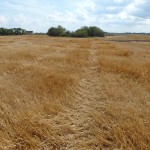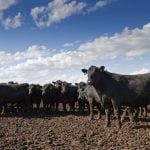
Tag Archives Soils and Crops

Irrigation: Past, present and future
During the past few wet years, irrigation projects have lost their urgency. Now is the time to refocus

Technology brings the world to your office
With Google Earth, visit the whole planet from the comfort of your home

Bigger farms, bigger farmers, but who owns the land?
There have been big farms since people started farming. But they aren’t immune to market forces. Ownership rules can have an impact too

Proper nitrogen application for your crop
Researchers and farmers have worried about the 4Rs of fertilizer for decades. The answers are not the same for everyone

“Spending” phosphorus fertilizer from the soil
We’ve greatly increased the spending from our capital accounts of phosphorus

New wrinkles to adding phosphorous
If you own the land, adding phosphorus fertilizer will pay off in the long run

The value of wheat straw
It can be tempting to burn wheat straw, but that nitrogen is valuable

Extreme weather events: Part 3 of a three-part series
In the third part of a three-part series on water, Les Henry takes a look at the long term


